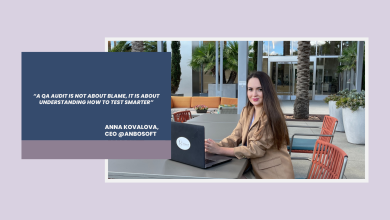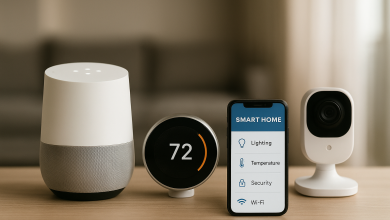
AI now touches nearly every corner of work. It’s become part of daily routines by screening job applicants, predicting supply trends, and drafting proposals. But women are still far less visible among the people designing, deploying, or even learning to use them.
So although both sexes face around the same levels of exposure to AI overall, the jobs with the highest exposure, which are shaping how AI is applied, are dominated by men. Even worse, a UN report found that AI in the workplace is nearly three times more likely to take a woman’s job than a man’s.
AI may be creating millions of new roles, but only for those able to keep pace. For many women, the obstacle isn’t skill or ambition; it’s finding access to learning that moves as fast as the technology does. And that’s where microlearning could level the playing field.
When AI Moves Faster Than Careers, Especially for Women
Roles that once evolved over years now transform in months. So the issue isn’t about simply keeping up; it’s about adapting in real time to tools that change how work itself is done.
Women, especially in administrative and service sectors, are at the sharp end of the shift. Fortune notes that in the U.S. between 2000 and 2019, around 93% to 97% of secretary and administrative roles were held by women. Exactly the kinds of roles most exposed to AI-driven process automation.
That concentration really matters. AI already performs a lot of the repetitive tasks that underpin clerical and customer service roles. Women remain underrepresented as AI users, designers, and graduates in ICT fields. This gap limits both diversity and innovation opportunities.
The result is a widening divide: women are heavily represented in jobs most affected by AI but underrepresented in those shaping it. In a workplace where every role now demands some level of AI fluency, whether it’s prompting, interpreting outputs, or integrating automation, speed of learning and adaptation can be a woman’s competitive edge.
Learning in Minutes, Competing for Decades
In the context of AI, where new tools emerge monthly, static curricula can’t keep pace. Microlearning is the opposite of degree-chasing. It’s small, modular, and tailored for just-in-time consumption, making it uniquely suited to technologies that change faster than course syllabi can.
For women who may be balancing multiple roles—professional, caregiver, community leader—learning windows can be short and sparse. A 20-minute module on designing a prompt or interpreting model outputs in HR analytics can be slotted between meetings.
Here’s how microlearning offers three strategic advantages:
- Flexibility: Instead of blocking off entire days for training, which many employers can’t justify for non-technical roles, short modules can be completed during a typical day and revisited as new AI tools appear.
- Relevance: Content can be updated quickly, keeping skills aligned with real-world AI adoption. For instance, short bursts on data handling today, prompt design tomorrow, and ethics of models next week.
- Cumulative stacking: Over time, these small modules stack into a meaningful fluency. When adapting to AI, accumulating specific micro-skills could matter more than one broad diploma earned years ago.
To use this model for women and the wider workforce, organizations should design or provide modules in all areas where women work and the AI impact is high.
Not only should the models be short and consumable, but businesses need to make sure they’re effective. They can use analytics to track microlearning completion rates and performance. This is so they’re getting a clear ROI on their microlearning investment while also recommending the next module based on an employee’s progress.
Each completed lesson should carry recognition and stack into a visible skills portfolio, turning microlearning from an occasional exercise into a continuous, trackable form of professional growth.
Demand for agile, bite-sized upskilling is rapidly rising. According to LinkedIn’s 2025 Workplace Learning Report, 91% of L&D professionals say continuous learning is more critical than ever, and 71% are now integrating AI into their training efforts.
Microlearning proves that speed and depth aren’t mutually exclusive. It gives professionals—especially women juggling multiple demands—a realistic way to keep pace with a world that rarely pauses for formal training.
But accessibility is only the beginning. The real story lies in what happens when women use these micro-moments of learning not just to keep up with AI but to shape how it’s used.
From Access to Agency
Microlearning platforms are exceptionally convenient. But they’re more than that; they give female professionals agency. It gives women the choice to decide what to learn, when, and how it fits their next career move.
Microlearning can help women move from being recipients of AI change to active participants in shaping it. Earning micro-credentials can even help spark conversations with HR and L&D teams, uncovering which new skills open doors to higher-value roles or even leadership in AI-driven projects. Microlearning thus becomes part of a larger career strategy.
Reducing this knowledge gap is essential, as women still hold only about 22% of AI roles worldwide, and their representation drops sharply at the top, under 14% in senior executive positions. That absence shapes the technology itself. Fewer women in the room means fewer perspectives guiding how AI is designed, tested, and used.
The barrier isn’t interest; it’s access and visibility. Microlearning begins to close that by creating constant, measurable proof of expertise, the digital paper trail that says, “I’m not catching up; I’m already contributing.”
When women understand how algorithms rank tasks or make decisions, they gain leverage. They can hand off routine work to automation, spot where bias might creep in, and push for clearer rules around how data is used. That kind of fluency helps lead smarter discussions about how AI should be used day to day.
AI won’t wait for anyone to catch up, and neither should learning. Microlearning offers a way for women to evolve at the same speed as technology itself. As women gain the fluency to interpret, question, and shape AI, they move from being subjects of automation to architects of its future.




